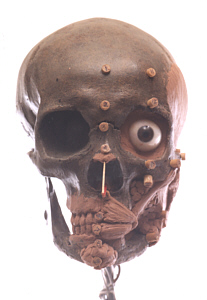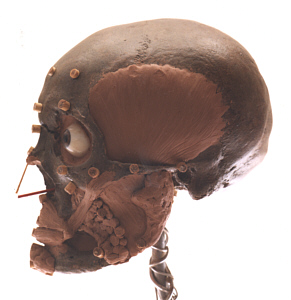

|
|
|
The use of tissue depth markers has been around for quite some time. Charts have been created showing the average amount of flesh found on different points of the skull. Originally the depths were measured either by taking a needle which had been burnt to create soot on one end and inserting it into a face until it reached bone. When removed, the portion of the needle that showed no soot was then measured and entered into a chart. Using the same points on numerous individuals, charts were then created showing average depths with consideration given to race, sex and weight. Sometimes cadavers were used instead. Today, the use of ultrasound allows a more accurate gathering of information.
The pitfalls to using this system are many. First of all, the
information is averaged out, and since you don't know if the
individual you are reconstructing is average, you could be off.
Secondly, the face can get terribly skewed if your skull is very
small (such as Pearl) or large, such as a Neanderthal. Finally,
people might just think they could then "connect the dots"
and come up with a reasonable likeness.
I like to use the depth markers as a basic guideline, adapting it for
each situation. Since Pearl was a very tiny skull, I used the markers
for a thin person, knowing that I wouldn't go below that depth.